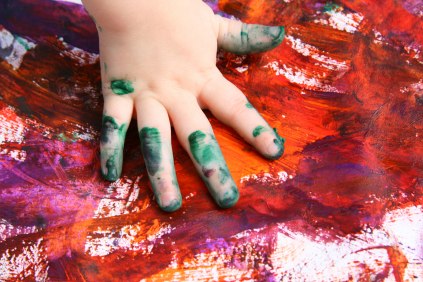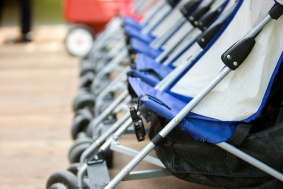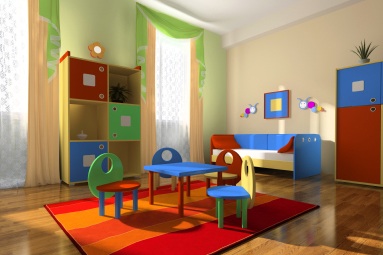
Technology in Primary Classrooms
As a follow-up, let students choose one animal to draw using the computer and write a short sentence under it telling about the animal. Print these for inclusion in a class book.
Ask students to use just drawing tools without color to show the setting or main character from a favorite book. On the top of their screen, I have them print their names and the title and author of the book.
Display these alongside the book in stand up form by creating a tent from a folded sheet of construction paper. Glue the computer sheet to the front of the construction tent.
Drill and Practice
You can use a word processing program to let students practice spelling words, write spelling sentences and practice math facts off flash cards or calculators. Let them experiment with different fonts, styles and sizes and colors of print when they do these basic tasks.
What can be a tiresome task will become fun, especially if you allow students to work in pairs. With computers, they can do half the writing and still print a copy for each to take home and study.
Clip Art
Show students how to import clip art so they can move it about freely and resize it. Assign groups of two to import their own sets of clip art to illustrate rhyming words; blends; compound words; antonyms; and concept words such as over, under, in, out. Older students can print the words under the illustrations. Again, allow students to make copies to take home after sharing with the class.
Once they get the hang of inserting clip art, children can’t get enough. Build on this interest by asking each to create a poster of favorite things. Let them choose their own fonts and colors and remind them that they do not need to have a graphic represent every word on their printed lists. Now your students are ready to try their hands at rebus stories.
Even those capable of spelling many words enjoy inserting a piece of clip art in place of some of those words. While some are completing this activity at the computer, the rest of the class can do the same activity using construction paper and magazine pictures.
Switch places eventually so everyone has a turn at both mediums. Share the stories with friends in another class.
Primary Math Ideas
If you have already worked with students on the elements of good story problems, let students work in pairs to insert objects, toys, or animals, and to write a number story problem about them. Print, and allow students to exchange and solve one another’s problems.
Younger students will be able to demonstrate the ability to do math patterning using a drawing program or clip art.
By the end of second grade, students are capable of creating calendars using programs like ClarisWorks and Scholastic SuperPrint.
Show them how to make a one- or two-month calendar. Students can write questions about the calendar page and print the results, which makes a nice math booklet for classmates to enjoy. Sample questions might include:
How many days does Pat have to wait for his birthday?
How many more days are there between the party and vacation than there are between the party and the movie date?
Do more people have birthdays this month or next?
Students can also make calendars as gifts for Mother’s Day, Father’s Day or Christmas. Each can be individualized with family birthdays and other special dates. Illustrations can be made by each student using a computer drawing program or the traditional methods of crayons and markers.
Webs, Puzzles, Maps and Other Projects
After children read a book or watch a movie, they can web the characters, setting, and plot of the story using a computer drawing program.
The title goes in an oval in the center of the page with the author underneath. Lines drawn out from the side represent various parts. The final product can be printed out or e-mailed to a friend or relative. Let students work a math paper using the computer calculator or use it to correct a completed paper.
Third graders can create puzzle grids similar to a Battleship grid using the drawing program of a computer. Label letters across the top of each line and numbers down the side. Teachers can make grids for younger students to use in this activity.
Six through eight year olds will probably do well with a grid of 8 x 8. Older children can make grids with more boxes. Print one grid for each child.
Next, each child chooses a magazine page and cuts it into as many squares as there are boxes in the grid. Mix the pieces before inviting someone else to put them in order on the grid. These make time fillers for those who finish other work quickly. Store the games in reclosable plastic bags and label by subject.
Once students know how to use the drawing and painting tools, they can create a computer map of their own neighborhood, park, town, campground, or fire safety route out of their homes. Remind them to include a key or legend and compass rose.
As an added activity, they can write directions in a word processing program for friends to use in following a path through the map. Have students trade their printed maps and directions.
If a teacher sets up a simple HyperStudio or HyperCard stack, primary students can add riddles or jokes on cards with buttons leading to answer cards. Imported or freehand art adds interest. Everyone will enjoy using this interactive activity.
Second and third graders can use an electronic encyclopedia to find information necessary to create their own booklets on various subjects. For instance, before summer break, students might research plants and insects to avoid while camping.
Each student or pair of students can contribute one tip. First aid remedies for these pests should be included before the booklet is printed and copied for each child to take home for vacation. Include computer drawings or freehand pictures.
Involving Parents
If the teacher uses technology in a variety of ways, students will find it easy to follow that example. Include parents whenever fitting, and you will gain their support for your technological endeavors. Then, if you need an extra pair of adult hands, someone will gladly offer theirs.
A nice way to do this is to greet students and parents in the fall with a computer slide show that tells them a little bit about yourself and the things you have planned for the school year. Use pictures and QuickTime movies of activities conducted during the previous year.
You might include your curriculum, lunch ticket fees, information about book orders, field trips, teacher phone number, nurse, and physical education schedules. Loop the show so everyone can see it as they visit your room. Provide computer-generated handouts of any items they will need to remember.
Use the same idea to show parents what their children have been doing throughout the year. Show it in the hall during conference time so those who are waiting for their turn will have the opportunity to watch and ask questions about the learning activities.
These ideas are just the beginning. The more you use the computer, the more you will think of ways to integrate technology into your own curriculum.










